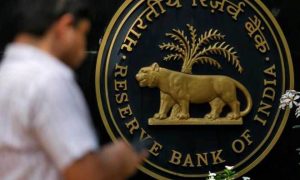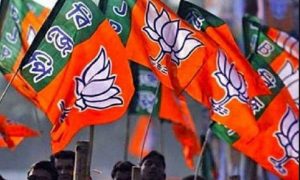Festive sales on online portals are round the corner. With social distancing becoming the norm, more and more people are preferring online shopping. If you are an online shopper, you must have seen the advertisements of e-commerce websites Amazon and Flipkart announcing the festive season sales of the year. Amazon’s Great Indian Festival will start from 17 October for a month, while Flipkart’s Big Billion Days sale will happen between 16 and 21 October. Apart from instant discounts, these events will unleash attractive cashback offers which are hard to ignore.
However, not all of these offers may work for you, so it’s important for you to analyze these before opting for them. We help decode some of the common offers you will find and the things you should keep in mind.
Price discounts
You may often find advertisements of huge price discounts, even up to 80%.
However, these may not be available on all the products “The highest offers are generally on the hero deals which are most advertised to pull more people on the online website. The discounts on the rest of the products may not be as high,” said Swati Bhargava, co-founder, CashKaro.com, a cash-back site.
“Generally, discounts of 70-80% are given on fashion products like apparels where one has to be careful as it may be meant to clear old stock and the quality may not be as good,” she added.
In case of electronic goods, too, usually the discounts are high on old models.
What you should check: Before getting lured by the huge discounts, check if they are available on the product and model you are looking for. “If you are planning to buy a product, it will be better you start tracking its price before the sale to see if you are actually getting a good discount or not. Also, compare the prices on multiple websites before buying a product,” said Bhargava.
No-cost EMIs
Portals generally offer the no-cost EMI schemes in case of high-priced items such as mobile phones and consumer durables. For instance, this time around, Amazon has a tie-up with Bajaj Finserv to provide no-cost EMIs on certain products priced up to ₹1 lakh.
Under the scheme, you can pay for the product in equal monthly instalments or EMIs instead of in a lump sum. The biggest pull of the scheme is that there is no cost attached for availing of the facility. For instance, if you are not able to pay ₹50,000 for a mobile phone or television upfront, you can opt to pay monthly instalments of ₹8,333 for six months.
This facility can help you manage your cash flows. But do these EMIs actually come with no additional cost? According to experts, there are additional charges which may actually increase the total cost of the product. “Often customers are not aware that an interest cost and processing fee are also involved in such purchases,” said Raj Khosla, managing director, MyMoneyMantra.com, an online financial services firm.
No-cost EMI generally work in two ways. One, the manufacturer pays out interest cost to the bank or non-banking financial company (NBFC). However, in lieu of this interest cost, the manufacturer typically lowers or cancels out the discount available on the product. Two, the interest cost is added to the cost of the product. Here, the price of the product available under no-cost EMI may actually be inflated, and you may not realize that there is an additional cost you are paying.
“Besides interest, the bank or NBFC will also charge a flat processing fee for the EMI plan and goods and services tax (GST) as applicable. It is also important to know that you do not earn any rewards points on ‘no-cost EMI plan’ and the EMI will reflect on your monthly statement for the entire tenor of the facility,” said Khosla.
What you should check: If a product is available at no-cost EMI, cross-check its price on other websites to see if it is inflated or not.
Cashbacks
These are one of the most popular offers used by online shopping websites to attract buyers. As the name suggests, under cashback, the buyer gets back a percentage of the cost of the product or a flat amount paid. For example, if you purchase a product for ₹5,000, you may get back ₹500 or 10% as discount bringing down your cost to ₹4,500.
What you should check: Although, the cashbacks may look attractive, you should read the terms and conditions carefully.
“Cashbacks offered by online portals generally come with terms and conditions. One should check how much is the cashback as they generally come with an upper limit or if there is a condition of minimum purchase amount. For example, the offer may show cashback of up to 20% but it may have a maximum cap of ₹1,000,” said Bhargava.
“One should also check when the cashback will be received. At times, it may be credited in three-four months. Also, check where will these cashbacks be credited, whether you will get them in your bank account or wallet? Most companies give cashbacks in wallets and at times put a cap on the amount that can be used for a single transaction. Also, check if there is an expiry date till which you will have to use it,” added Bhargava.
Mint take
There’s nothing better than getting something you want at a discount. But it is important to be mindful of overspending, especially in these times, when a lot of people are facing pay cuts and job uncertainty due to the economic stress caused by the covid-19 pandemic.
So before going into a buying spree, make a list of the products that you actually need and try to stick to that list. “Don’t get swayed by the discounts or deals. Some indulgence is okay but do not go overboard,” said Mrin Agarwal, founder director of Finsafe India Pvt. Ltd and co-founder of Womantra.
Don’t forget that over-spending can put you under financial stress, so be careful.





































